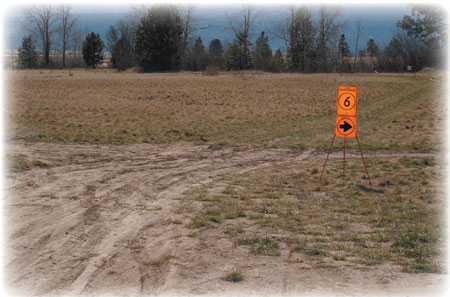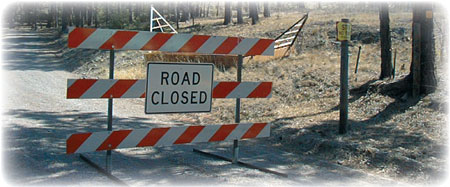Drop Points
Application Notes
DROP POINT signs are guide signs that direct incident personnel to specific destinations where they can drop off or pick up supplies and crews.
Use the single DROP POINT sign for individual drop points. Use the multiple DROP POINT sign to direct traffic to several drop points from a single intersection.
If drop points are accessed only from one direction, signs may be needed only on that side of the roadway.


Drop Points
**Obtain distance from table 2 (page 9).
(Click here for long description)
Application Notes
Official traffic control points are established to stop traffic, limit congestion, expedite emergency traffic, exclude unauthorized vehicles, and protect the public.
Traffic control personnel shall wear high-visibility safety apparel at all times. See pages 2 and 3.
Use the TRAFFIC CONTROL POINT sign, in conjunction with a standard STOP sign,
to designate an official traffic control point. Install the signs at the point where traffic
must stop to be checked. Mount the TRAFFIC CONTROL POINT sign directly below
the STOP sign.
Locate the traffic control point so that road users may safely turn around if they are refused entry. Typically, road users coming out of the temporary traffic control zone are not stopped. If exit signs are needed, they should match the approach signs.
Park the traffic control personnel vehicles out of traffic on the right side near the closure. Traffic control personnel should not cross the open roadway to speak to approaching drivers.
Do not stand or sit in front of or behind the barricade.
Place a Type 3 barricade in the lane where traffic is being stopped. Barricade stripes point to the direction traffic is to pass. See page 5.
Do not post notices and other information on the barricade.
Use appropriate closure signs on the barricade such as ROAD CLOSED, AREA CLOSED, or ROAD USE PERMIT REQUIRED.


Staffed Emergency
Road Closures
*Obtain distance from table 1 (page8). Increase distance
if traffic congestion extends beyond sign.
***Obtain distance from table 3 (page 26).
(Click here for long description)

